Other names Basileios Zacharias Name Basil Zaharoff | ||
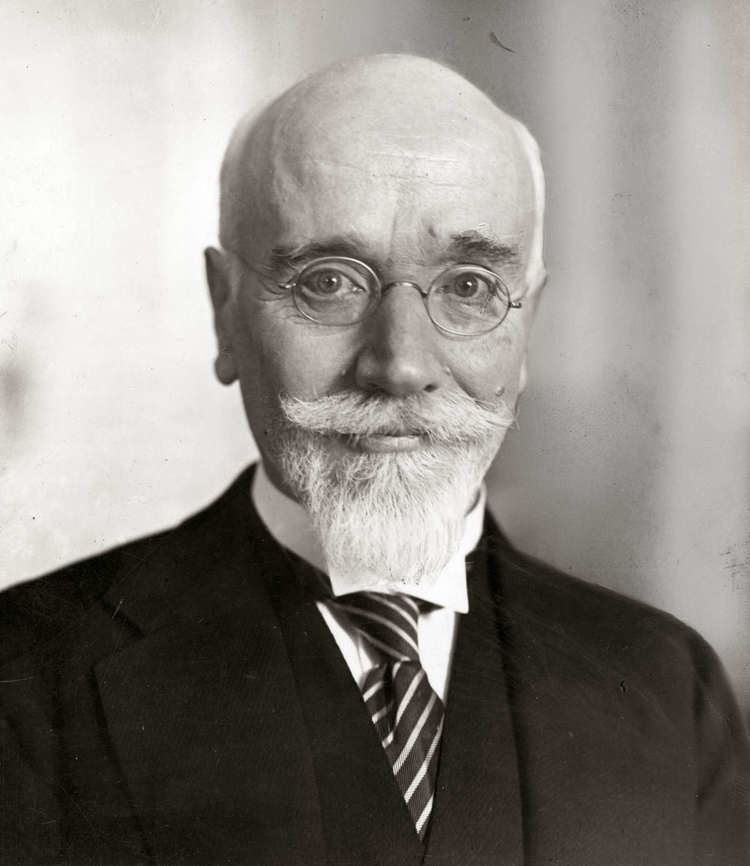 | ||
Full Name Zacharias Basileios Zacharoff Occupation Arms dealer, industrialist and philanthropist Similar Hiram Maxim, Leo McKern, Isaac Peral | ||
The Merchant of Death - Basil Zaharoff I WHO DID WHAT IN WW1?
Basil Zaharoff, GCB, GBE (Greek: Βασίλειος Zαχαρίας Ζαχάρωφ; October 6, 1849 – November 27, 1936), usually known by his honorific title Sir Basil Zaharoff, was a Greek arms dealer and industrialist. One of the richest men in the world during his lifetime, Zaharoff was variously described including “merchant of death” and “mystery man of Europe”. His success was forged through his cunning, often aggressive and sharp business tactics. These included the sale of arms to opposing sides in conflicts, sometimes delivering fake or faulty machinery, and reportedly sabotaging trade demonstrations.
Contents
- The Merchant of Death Basil Zaharoff I WHO DID WHAT IN WW1
- Sir basil zaharoff dead
- Early life
- Legal difficulties
- Arms dealing
- Maxims machine gun
- Corrupt business tactics
- World War I
- Post war dealings
- Personal life
- Philanthropy
- Honours
- In popular culture
- References
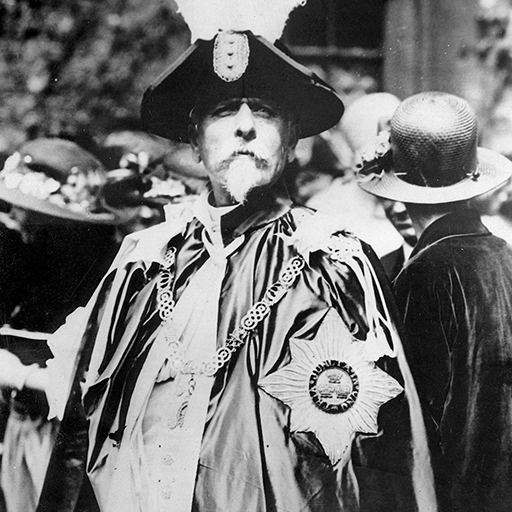
Sir basil zaharoff dead
Early life
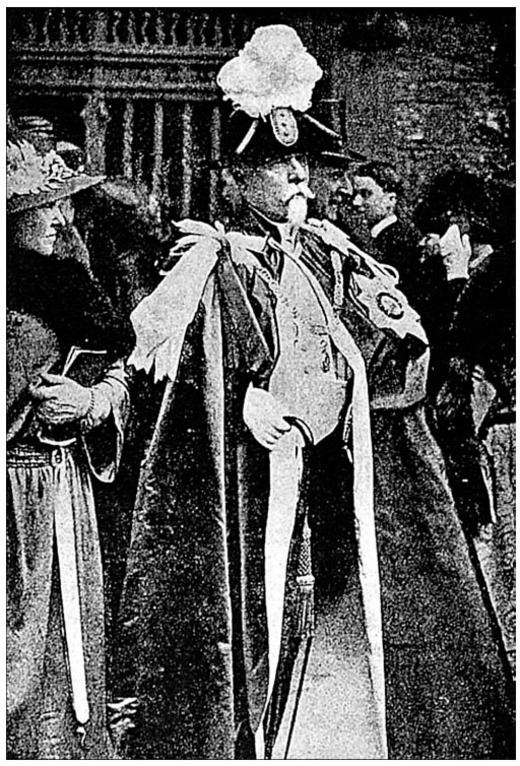
Basileios Zacharias was the only son and eldest of four children of a Greek merchant, born in the Ottoman Empire town of Muğla. The Russian-sounding surname Zaharoff was adopted by his family when they lived in Russia as exiles following the anti-Greek "Easter pogroms" of 1821. The family returned to the Ottoman Empire in the 1840s and, by 1855, had returned to Constantinople living in the Greek neighbourhood of Tatavla.

Young Basileios' first job was as a tourist guide in the Galata. It is thought he then became an arsonist with the Istanbul firefighters: 19th-century firemen in Istanbul being less effective at extinguishing fires than the recovery or salvage of treasures from the rich for payment of a hefty commission.
Legal difficulties
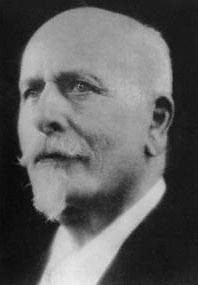
Zaharoff was summoned to court in London over irregular commercial activities involving the export of goods from Istanbul to London. The London Greeks from Constantinople preferred such matters involving members of their community to be settled outside the English courts, and he was discharged on condition that he paid restitution to the claimant in the sum of £100, and remained within the court's jurisdiction. He immediately left for Athens, where the 24-year-old Zaharoff was befriended by a political journalist, Etienne Skouloudis. The eloquent Zaharoff succeeded in convincing Skouloudis of the rightness of his London court case.
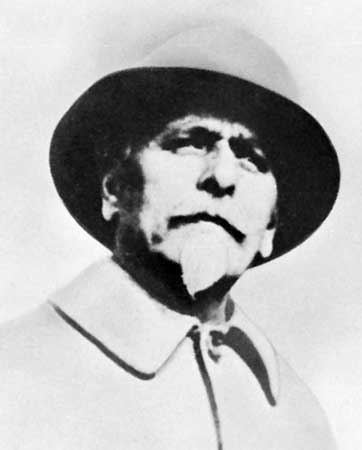
By a stroke of good fortune, Skouloudis was a friend of a Swedish captain who was about to move on from his role as a representative of arms manufacturer Thorsten Nordenfelt to a more important position. Skouloudis, as a rising politician, used his influence to recommend Zaharoff to fill the vacancy. Zaharoff was hired on October 14, 1877, so beginning a spectacular career. At that time, the political and military instability in the Balkan States, Turkey and Russia provided an excellent opportunity for the talented young salesman. Each state was ready to spend to cope with the perceived aggressive intentions of its neighbours, even after the Treaty of Berlin of 1878.
Zaharoff did not make arms dealing his sole business at first. After Cyprus passed under British control in 1878 he seems to have slipped back into Britain; by 1883 he was working as a shipping agent in Galway, Ireland, where he recruited local girls for work in American factories. He also had a spell in the United States where he worked as a confidence man, and later as a salesman for a St Louis railcar business. In 1885, posing as "Prince Zacharias Basileus Zacharoff," he married a Philadelphia heiress, Jennie Billings, and was pursued to Rotterdam by detectives after his exposure as a bigamist by an Englishman who recognised him as the same man who had married an English girl in Bristol in 1872.
Arms dealing
Zaharoff sold munitions to many nations, including Great Britain, Germany, the Russian and Ottoman Empires, Greece, Spain, Japan and the United States. Despite his reputation for corruption, he was instrumental in marketing military equipment, including various famous weapons such as the Maxim gun (one of the first fully automatic machine guns) and the first working submarine. The British-Swedish Nordenfelt produced a range of anti-torpedoboat guns in Erith, Kent, Stockholm and Spain.
Zaharoff worked for Vickers, the munitions firm, from 1897 to 1927.
Maxim's machine gun
The next person to enter Zaharoff's story was Hiram Maxim. Maxim's automatic machine gun was a significant improvement over the hand-cranked models in use prior to then. Maxim’s gun was certainly better than anything that Nordenfelt had on the shelf at the time. Zaharoff is believed to have had a hand in the events surrounding Maxim's attempts to demonstrate his invention between 1886 and 1888. In the first, Maxim's and Nordenfelt's machine guns were to be demonstrated at La Spezia, Italy, before a distinguished audience which included the Duke of Genoa. Maxim's representatives did not show up; a person unknown had waylaid them with a tour of La Spezia's nocturnal establishments leaving them unfit for purpose the next morning.
Round 2 took place at Vienna, where the exhibitors were instructed to modify their weapons to comply with Austrian Infantry-standard sized cartridges. After shooting a few hundred rounds, Maxim's apparati became erratic before stopping altogether. When Maxim took one weapon apart to see what had happened, he discovered that they had been sabotaged, but it was too late to repair. A third demonstration also took place in Vienna, and here the gun worked perfectly. But again an unknown person went through the gathering of senior officers, convincing them that the workmanship required to produce such a marvellous weapon could only be done by hand, one at a time, and that without the means for mass production, Maxim could never produce machine guns in sufficient quantities to satisfy the needs of a modern army. Nordenfelt and Zaharoff had won. Maxim, who knew he had a good product, successfully sought a merger with Nordenfelt, engaging Zaharoff as their principal salesman on a huge commission.
Under pressure from Rothschild and Vickers Thorsten Nordenfelt merged with Maxim's in 1888 to form the Maxim Nordenfelt Guns and Ammunition Company. Personally bankrupt two years later Nordenfelt was forced out of the company, and moved to France.
Corrupt business tactics
From 1886 to 1889, at the same time that Zaharoff got the Maxim machine gun, he managed to appropriate Isaac Peral's submarine; although these facts are less well known. Zaharoff and Nordenfelt tried at this time to develop a submarine for their own business purposes.
One of the most notorious sales by Zaharoff was that of the Nordenfelt I, a faulty steam-driven submarine model based on a design by the English inventor and clergyman Rev George Garrett, which US-Navy intelligence characterized as capable of "dangerous and eccentric movements." Thorsten Nordenfelt had already demonstrated his vessel at an international gathering of the military elite, and whilst the major powers would have none of it, smaller nations, attracted by the prestige, were a different matter.
It was thus that, with a promise of generous payment terms, Zaharoff sold the first model to the Greeks. He then convinced the Turks that the Greek submarine posed a threat, selling them two. After that, he persuaded the Russians that there was now a new and significant threat on the Black Sea, and they bought another two.
None of these submarines ever saw action. The mechanics, driven by steam propulsion, were completely inadequate for underwater navigation, and failed demonstrably when undergoing sea trials by the respective Navies. Besides the underlying problems of the faulty propulsion system, they were also chronically unstable. One of the Turkish Navy's submarines sank, capsizing during a torpedo firing test. The vessel reared in a vertical position, from which it sank by the stern.
At this time Spanish inventor Isaac Peral designed and built the first submarine capable of navigating underwater with a decent level of control and with the ability to launch torpedoes both submerged and on the surface. This was the first proper submarine, solving the problems of propulsion, stability and armament all at once. Peral's submarine was driven by electric propulsion, and had a periscope, target practice apparatus, compensating compass needle, gyroscope, sliding electric torpedo tube launcher and servomotor (to maintain the stability and the trim of the ship in all circumstances).
Zaharoff found out within no time about this young Spanish Naval officer's invention. Previously in shipbuilding, he had already seen the plans and memorandum reports sent by Peral to the Spanish Navy's HQ at the Defence Ministry.
Later on, during Peral's visit to London, Zaharoff tried meeting with him unsuccessfully, with the help of one of Peral's Spanish Navy fellow officers. Peral refused twice, but after several attempts, he had a meeting with Thorsten Nordenfelt, the company owner, who offered him a deal to purchase the patent of the stability servomotor. Isaac Peral rejected both offers but signed his sentence in that same instant, without knowing it.
Zaharoff then got to work with his own Machiavellian plan. The Spanish inventor, as with Maxim, suffered four sabotages during the tests: the first of them, in the previous test, in the presence of the Head of the Spanish State, but, Peral, more cautious than the North American inventor, proved successful in all of them.
Despite this, Zaharoff used underhand methods, which came to light later, and was able to cause a controversy between the inventor and his own government leading to the Spanish Government's disapproval of this submarine invention, although it would have been a formidable weapon in the conflict with the United States, several years after.
Zaharoff traveled to Spain several times between 1886 and 1890 with three objectives: boycott Peral's submarine, sell weapons to the Spanish Army, and acquire a Spanish munitions factory. He was successful in all three objectives, mainly because his initiation of an amorous relationship with Pilar de Muguiro y Beruete opened many doors for him.
Pilar's father, influential banker Fermín Muguiro, Count of Muguiro, was a close friend of the King, and leader of Spanish Conservative Party. She was a personal friend and niece of Segismundo Moret, a leading Spanish progressive thinker and the Liberal Party Leader's right-hand man. Unhappily married to King Alfonso XII's cousin, the Spanish Grandee, Francisco de Borbón, Duke of Marchena, she had unrestricted access to the Royal Palaces. During one trip, Zaharoff was spotted at the shipyard where the Spanish submarine was being built, but the Spanish authorities "covered up" the matter.
The acquisition of one of the best Spanish armament companies, Euskalduna, located in north Spain and renamed “Placencia de las Armas Co. Ltd” was in large part thanks to his love affair (later attributing his professional success to his sexual prowess), and through establishing a powerful network among Spanish politicians, journalists and military commanders, who served his business interests well. This influential group of people took his side against the development of Isaac Peral's submarine, and the Spanish Government, despite the astounding success in sea trials, finally pulled the rug from the project.
After “Placencia de Armas Co. Ltd” swindled the Spanish Government by selling useless arms during the 1898 War (also handing Maxim important and "sensitive" information, which reached his government during the conflict), the Sociedad Española de Construcciones Navales in Spain, a branch of Vickers were awarded, by the Spanish Government, exclusive naval construction rights for the Spanish Navy.
In the aftermath of this scandal, accusations of bribery and manipulation flew in the direction of this dangerous trafficker of weapons. A Spanish Navy lawyer denounced the Spanish Government for two alleged crimes of "prevarication." The Spanish Government acted expeditiously and especially cruelly against any naval officers who went public with their discontent. The Central Chief of Staff and the Boss of the Armada Juridic Service were fired, and hundreds of officers were imprisoned and lost their jobs.
Zaharoff's power and influence in Spain lasted until his death in 1936, the year in which the Spanish Civil War began.
Also, the 1934 United States Senate Nye Committee Memorandum shows that Zaharoff was paid considerable sums for transactions made between foreign companies and the Spanish Government (for example, he got paid between a 5 and 7% commission for the price of American submarines sold to Spain, throughout all these years).
Although very little could be proved, Zaharoff was viewed as a master of bribery and corruption, but the few incidents that did become public, such as the large bribes received by Japanese Admiral Fuji, indicated that a lot more was going on behind the scenes. In 1890, the Maxim-Nordenfelt association broke up, and Zaharoff chose to go with Maxim. Using his commissions, Zaharoff bought shares in Maxim’s company until he was in a position to tell Maxim that he was no longer an employee, but an equal shareholder.
By 1897, the Maxim company had become important enough that it received a buyout offer from Vickers, one of the then giants of the armaments industry. This involved substantial settlements in both cash and shares for Maxim and Zaharoff. From then until 1911, while Maxim's business enthusiasm waned, Zaharoff's enthusiasm grew, and he expanded his portfolio of Vickers shares. After Maxim's retirement, Zaharoff was appointed to Vickers' board of directors.
The 1900s (decade) was a time for many European armies to rebuild and modernize. Germany and the United Kingdom both sought improved naval capability, and Vickers, with Zaharoff, were willing and able to service both sides. After its disastrous defeat by Japan in 1905, the Russian Navy also needed new equipment, but Russia was handcuffed by a wave of protectionism that required domestic industry for the rebuilding. Zaharoff’s response was to build a huge Russian arms production complex at Tsaritsyn as a subsidiary of Vickers.
The opening of Russian Tsarist archives after World War I led to some insights into the tactics of the arms industry. One 1907 letter, in particular, was written from the Paul von Gontard Factory (a secretly-controlled Vickers company in Germany) to a Vickers-associate in Paris recommending that press releases be sent out to the French press suggesting that the French improve their military to meet the threat posed by German rearmament. These French newspaper articles were recorded by the Reichstag, and instigated a vote to increase military spending, all of which worked to the advantage of Zaharoff.
World War I
In the years immediately preceding World War I, Zaharoff’s fortunes grew in other areas to support his arms business. By purchasing the L'Union Parisienne des Banques (Union Parisienne Bank), which was traditionally associated with heavy industry, he was better able to control his financing arrangements. By gaining control of Excelsior, the popular French daily newspaper, he could guarantee favourable editorials for the arms industry. To gain public recognition and acclaim, he founded a retirement home for ex-French sailors, while a Chair in Aerodynamics at the University of Paris led to further honours.
In April 1914, Australian newspapers published reports from London dated 25 April that M. Zaharoff had donated ₤20,000 "in order to enable France to be worthily represented at the forthcoming Olympic Games in Berlin" in 1916. The 1916 Olympic Games were subsequently cancelled because of the war. Zaharoff's donation represented a substantial contribution. On May 10, the French Government announced it would donate ₤6,000 to its Olympic team, and would distribute ₤12,000 of Zaharoff's donation among its Olympic teams, with the remaining ₤8,000 to "the furtherance of the Olympic cause."
On July 31, 1914, coincidentally the same day that the noted antimilitarist Jean Jaurès was assassinated, Raymond Poincaré signed a decree appointing Zaharoff a Commander of the Legion of Honour.
In March 1914, Vickers announced a new dawn of prosperity. During the course of the war, Vickers would produce 4 ships of the line, 3 cruisers, 53 submarines, 3 auxiliary vessels, 62 light vessels, 2,328 cannon, 8,000,000 tonnes of steel ordnance, 90,000 mines, 22,000 torpedoes, 5,500 airplanes and 100,000 machine guns. By 1915, Zaharoff had close ties with both David Lloyd George and Aristide Briand. It is reported that, on the occasion of one visit with Briand, Zaharoff surreptitiously left an envelope on Aristide Briand’s desk; the envelope contained a million francs for war widows.
One of Zaharoff’s tasks during the Great War was to ensure that Greece joined the war on the Allied side, helping to reinforce the eastern front. On the surface, this seemed impossible since King Constantine was a brother-in-law of the Kaiser. Setting up a press agency in Greece to spread news favourable to the Allies, led, within a few months, to Constantine’s deposal in favour of Prime Minister Eleftherios Venizelos.
By the end of World War I, The Times estimated that Zaharoff had laid out £50 million in the Allied cause.
Post-war dealings
In the years that followed, Zaharoff involved himself in the affairs of the lesser powers, which the Big Four, involved in remaking Europe, could happily ignore. In particular, he set out to ensure that Greece and Venizelos received a proper share from the spoils from the badly weakened Turkey. In 1920, he donated half a billion gold francs to the Greek State for the Greek cause (Megali Idea). Zaharoff convinced Venizelos to attack but, after some impressive initial success, the Greek Army was eventually driven back. In the elections that followed, Constantine’s loyalists managed to force Venizelos to flee, but Zaharoff stayed around to persuade the same King that he had to attack Turkey again. But with Mustafa Kemal now in charge of Turkey, this venture was bound to fail. Zaharoff’s war adventures were not well received by the press in Paris and London.
Zaharoff was also involved in two more significant financial ventures in October 1920, becoming involved in the incorporation of a company that was a predecessor to oil giant British Petroleum. He foresaw that there was a great future in the oil business.
His association with Prince Louis II of Monaco led to his purchase of the debt-ridden Société des Bains de Mer, which ran Monte Carlo’s famous casino and was the principal source of revenue for the principality. He succeeded in returning the casino to profit again. At the same time, Zaharoff had prevailed upon Clemenceau to ensure that the Treaty of Versailles included protection of Monaco’s rights as established in 1641. Louis had noted their gradual erosion over the subsequent three centuries.
Personal life
Zaharoff was a friend of both the actress Sarah Bernhardt and her Greek husband Jacques Damala (who was once described as the handsomest man in Europe). When Damala's mistress (who injected him with heroin between acts of plays he was appearing in) had an illegitimate daughter by him in 1889, she left the baby in a basket (with a note) on Sarah Bernhardt's doorstep. The baby (who was baptised Teresa) was given to the care of Zaharoff, who found a family to raise her in eastern Thrace (at Adrianopole). In 1920, Teresa posed for Picasso, and she had affairs with the American novelist Ernest Hemingway, and Gabriele d'Annunzio. The story of her life is told 1997 by Freddy Germanos (1934-1999) in the book Teresa: Historical novels.
Zaharoff was fascinated by aviation, and gave money and other support to pioneers in Great Britain, France and Russia. He encouraged Hiram Maxim in his attempt to build a flying machine, and later claimed that he and Maxim were the first men to be lifted off the earth, when Maxim tested his first "flying machine" at Bexley in 1894.
In September 1924, Zaharoff, almost 75 years old, remarried. (He married an English woman much earlier in life—it is believed as of mid-February 1911, primarily to obtain a British passport). In the late 1880s he had met 1st Duchess de Villafranca de los Caballeros, María del Pilar Antonia Angela Patrocinio Fermina Simona de Muguiro y Beruete. On 7 January 1886 she had married Prince Francisco María de Borbón-Braganza y Borbón, 1st Duke of Marchena (1861-1923), whose brother, Pedro de Alcantára Maria de Guadalupe Teresa Isabel Francisco de Asis Gabriel Sebastian Cristino, was a grandfather of María Cristina de Borbón y Bosch-Labrús, the first wife of Antenor Patiño. Divorcing her husband, a cousin of the King of Spain Alfonso XII, was, despite his documented insanity, almost impossible so she and Zaharoff were made to wait until Prince Francisco died. Lady Zaharoff in her own right was reputed to be one of the richest women in Spain. Some eighteen months after their marriage, Lady Zaharoff died of an infection.
Zaharoff had several residences; his country house the prestigious Château de Balincourt, at Arronville near Paris, formerly the property of King Leopold II of Belgium, was one of the most beautiful in France. The house was filled with works of art, the results of selections throughout forty years in the markets of Europe.
According to the Princess Marthe Bibesco, Basil Zaharoff was one of two illegitimate sons (by different mothers) engendered by her maternal grandfather. He was said to greatly resemble his parent. Thus, he was Princess Bibesco's great-uncle. She met him only once, at his investiture, at Windsor. After the death of Lady Zaharoff he began a liquidation of his business assets, and undertook writing his memoirs. When the memoirs were completed, they were stolen by a valet who had, perhaps, hoped to make his fortune by revealing embarrassing secrets about the greats of Europe. The police recovered the memoirs, and returned them. On payment of the reward to the policemen who returned the manuscripts to Zaharoff, apparently he consigned them to the fireplace at his home.
Philanthropy
Zaharoff was a major financial benefactor to various institutions:
